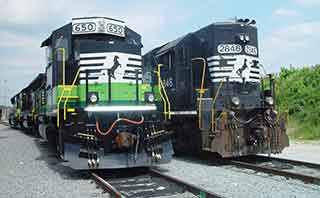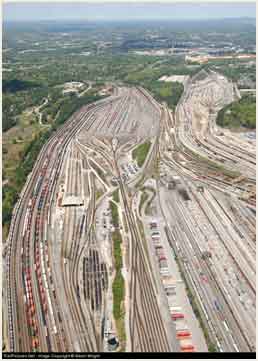GaDER RailLocomotive Emissions and Air Quality in Georgia...

Locomotives do heavy work - often 24 hours per day, seven days per week - operating in cities near residential areas, schools, hospitals, and other sensitive areas. Although they emit fewer pollutants than trucks carrying the same amount of cargo, locomotives normally use diesel fuel and can emit high levels of air pollutants such as particulate matter (PM), oxides of nitrogen (NOx), and carbon monoxide (CO). To reduce the impact of locomotive emissions on air quality, the US EPA has both regulatory and voluntary programs in place. However, air quality monitors near rail yards in Georgia measured unusually high levels of pollutants, so the Georgia Environmental Protection Division (EPD) implemented a program to understand and reduce emissions from rail yards. Information on the analysis and program is available here.
Low-emission Rail yard Locomotives: The EPD has partnered with the Georgia Department of Transportation (GDOT) to reduce pollutants emitted from locomotives operating in rail yards in the Georgia cities of
 Atlanta, Macon, and Rome. While locomotives can operate for over 40 years, technology has greatly improved since most locomotives in use were built. Commercial railroads do not need to currently replace locomotives in these areas; however, funding assistance through Congestion Mitigation Air Quality (CMAQ) is enabling railroads to accelerate the modernization process. More information on this program is available here.
Atlanta, Macon, and Rome. While locomotives can operate for over 40 years, technology has greatly improved since most locomotives in use were built. Commercial railroads do not need to currently replace locomotives in these areas; however, funding assistance through Congestion Mitigation Air Quality (CMAQ) is enabling railroads to accelerate the modernization process. More information on this program is available here.

Railroads are a very important part of Georgia’s infrastructure and economy, and they are working closely with the GA EPD to reduce their environmental impact as they perform their heavy hauling!
